I easily made it through twelve years of formal state-sanctioned education without once hearing the word “lesbian,” let alone any other type of lesbian history or gay history instruction, and I imagine this remains true for most students today. Luckily, we’ve all grown up into beautiful, beaming humans who know how to use the internet and check out books from the library, therefore enabling us to confirm that pretty much everybody is gay.
Please note that the inclusion of a person on this list is by no means an endorsement of all of their ideas, actions or beliefs. It’s simply an indication that they were gay, lesbian, or bisexual. This is a list of acknowledgment, not celebration because history is messed up, man.
1. Willa Cather
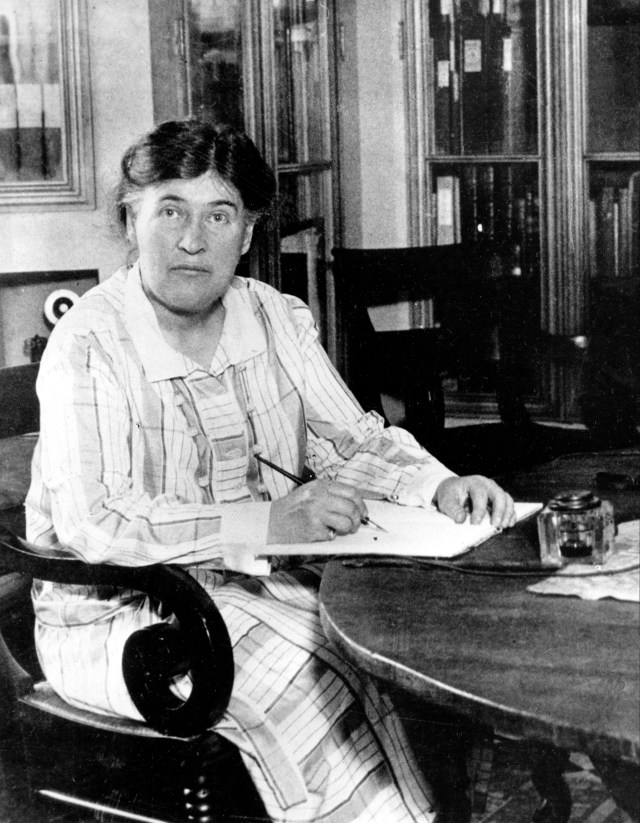
Who me, writing Sparia fanfic? I’d never.
Pulitzer Prize winner Willa Cather went by “William” as a University of Nebraska student in the early 1890s, and lived with editor Edith Lewis in New York City for 39 years, until her death in 1947. Cather’s male protagonists may have been “suspiciously autobiographical,” writes Lillian Fadermen in Surpassing the Love of Men, who also noted that, due to the stigma around homosexuality that Cather grew up in, “perhaps she felt the need to be more reticent about love between women than even some of her patently heterosexual contemporaries because she bore a burden of guilt for what came to be labeled perversion.” Like so many other closeted women in history, Cather was a “private person” who enjoyed seclusion and destroyed many of her old drafts and letters before her death.
2. Alice Dunbar-Nelson
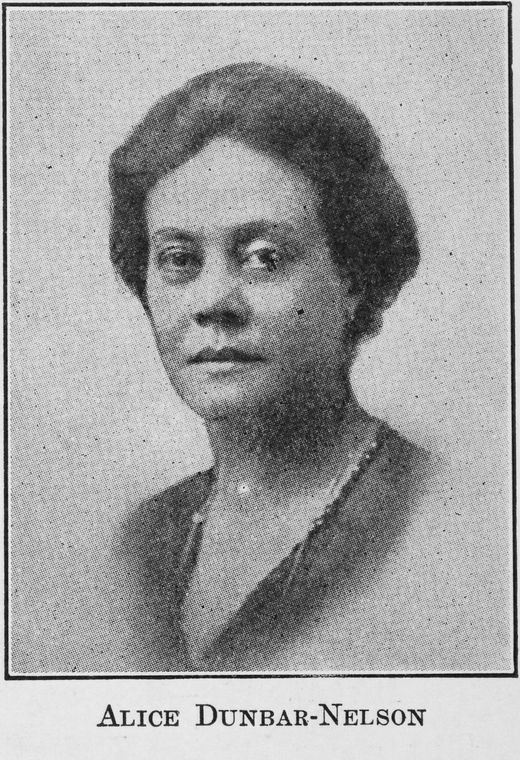
The legendary activist and poet married journalist Paul Laurence Dunbar in 1898, but the relationship was both rocky and abusive, and Paul reportedly was very unhappy about Alice’s lesbian affairs. They separated in 1902. While teaching at Howard High School in Delaware, Dunbar had a long-term relationship with Edwina Kruse, the school’s principal. She then married fellow teacher Henry Arthur Callis but the marriage only lasted a year. She married journalist and activist Robert J. Nelson in 1916 and they were still married when she died in 1935. By reading her diary, Nelson discovered that his wife was having affairs with women, including artist Helene London and journalist Fay Jackson Robinson, but apparently “tolerated” them, despite “occasional fits of rage.” Alice was a revolutionary force in the women’s and African-American civil rights movement while also publishing poetry, stories and essays. Due to the overall status of African-American women at the time, she struggled to get paid for her work or even be adequately recognized for it.
3. Florence Nightingale
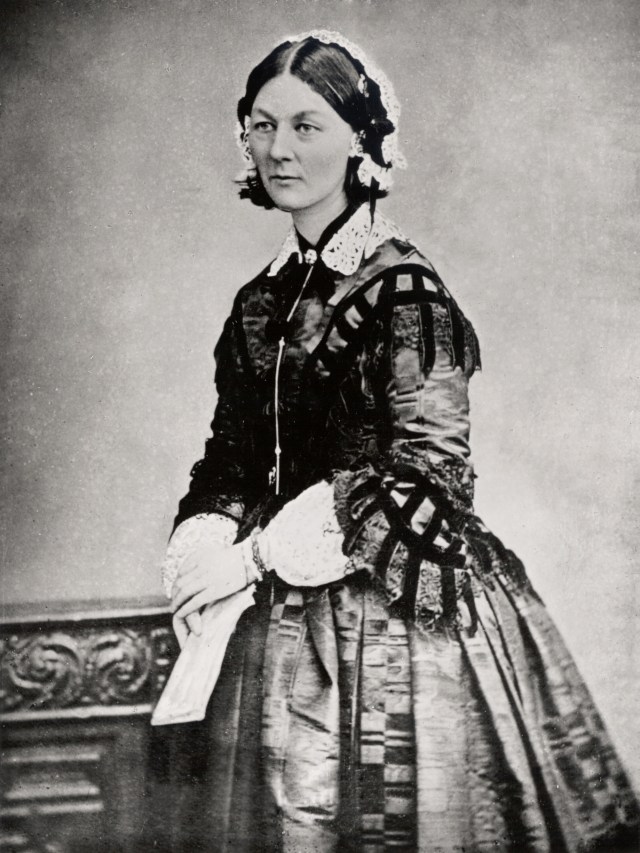
Stop trying to sell me on Diva Cups, I like my pad very much, thank you.
According to Superstars: Twelve Lesbians Who Changed the World, Florence had three women she loved passionately, beginning with her cousin, Marianna Nicholson, which is why Florence spent so many years pretending to like Marianna’s brother, Henry, and living with them… until he proposed, she had to say no, and Marianna stopped talking to her. She was devastated. Florence hated socializing, courting, and pretty much everything expected of women. She also loathed the women who played into those expectations. She fought for literal decades with her entire family regarding her refusal to meet their expectations, and eventually she got her way and went on to revolutionize the field of nursing and the military hospital conditions. She shared a close intimate relationship with her Aunt Mai, who moved in with Florence at one point when Florence was sick and claimed to be dying (whether or not she truly was dying or just wanted her family to leave her alone so she could work is up for debate). When Mai was summoned home after three years with Florence, she was replaced by Hilary, a cousin who adored Florence and stayed until her own family demanded her return. Always considered “one of the boys,” Florence died having changed the world, but never married, and, according to historians, completely “chaste.”
4. Babe Didrickson
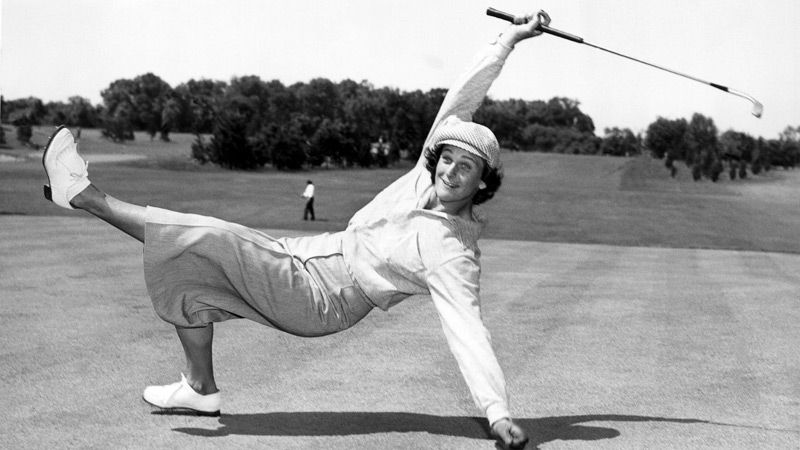
Is this how scissoring works?
Babe Didrickson, the co-founder of the Ladies Professional Golf Association, set world records in javelin throw and eighty-meter hurdles in the Olympics. Although Babe married Greek professional wrestler George Zaharias in 1908, by the 1950’s she’d moved on to a relationship with golfer Betty Dodd. They’d met at an amateur golf tournament in 1950 and hit it off immediately. They toured together and eventually Dodd moved in with Babe and her husband.
5. Emily Dickinson
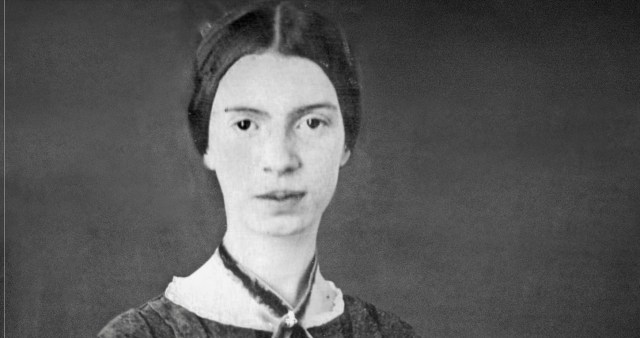
The legendarily depressive poet met her beloved Susan Gilbert while studying as a teenager at Amherst Academy. Gilbert married Dickinson’s brother, Austin, but that had no impact on the passionate communication between the two — all of which was edited out when Sue’s daughter, Martha Dickinson Bianchi, prepared the letters for publication. “Since love between women had become in her day an abnormality, if Emily Dickinson were suspected of lesbianism,” Lillian Faderman wrote in Surpassing the Love of Men, “the universality and validity of her poetic sentiments might even be called into question.” By all accounts, Austin and Sue had a terrible marriage, and Austin regularly cheated on his wife with the woman who’d end up editing many of Dickinson’s poems for publication after her death. Family!
6. Barbara Jordan
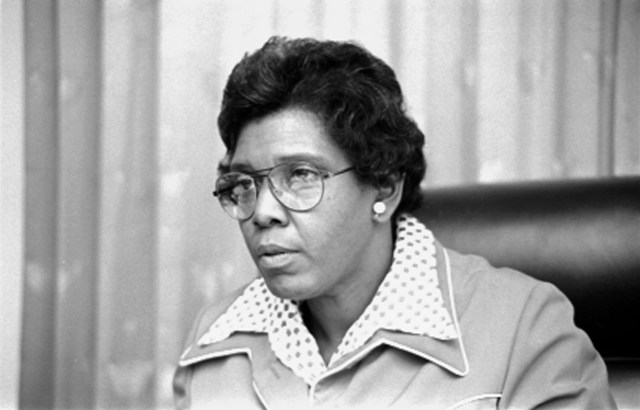
Civil rights leader and progressive politician Barbara Jordan was outed in her 1996 obituary, when she became the first black woman to be buried in the Texas State Cemetery. She was already the first woman to serve in the Texas House of Representatives, the first post-reconstruction African-American State Senator and the first black woman to keynote the Democratic National Convention. She met educator Nancy Earl, who would become her partner of over thirty years, on a camping trip, and Earl often helped Jordan write her speeches.
7. Katharine Lee Bates
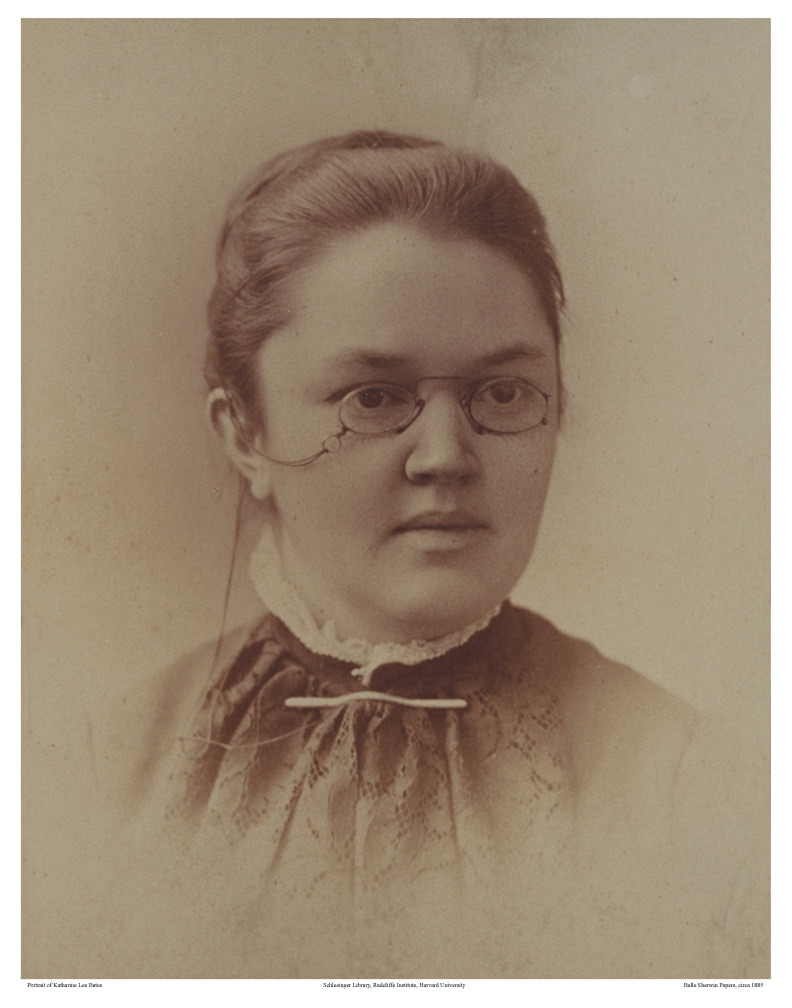
The famed composer of “America the Beautiful” never married, but lived in Wellesley with Katharine Coman, the founder of the Department of Economics at Wellesley College. The two had what we now know as a “Boston Marriage,” a co-habitational relationship between two educated unmarried women. When asked by a colleague if she minded being a “free-flying spinster” and a “fringe on the garment of life,” Bates remarked that she “always thought the fringe had the best of it. I don’t think I mind not being woven in.”
8. Lorraine Hansberry
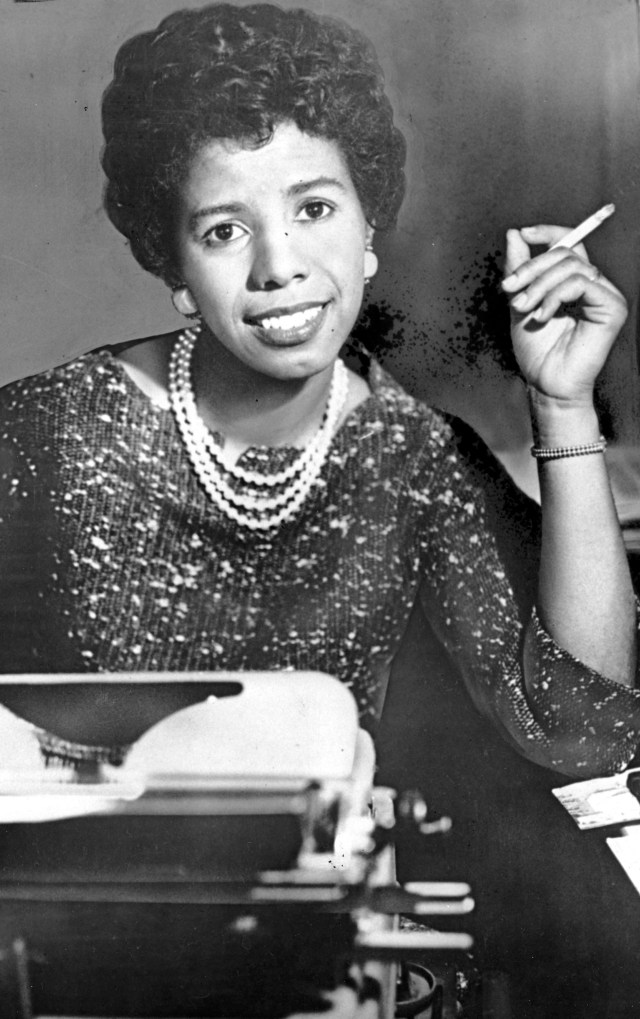
This is the face of somebody who has just finished writing a really great personal essay for Autostraddle.com
Lorraine Hansberry, author of Raisin In The Sun and the first black playwright to win a “Best Play” award from the New York Drama Critics’ Circle, spent the entirety of her short life (she died at the age of 34 from Pancreatic Cancer) in the closet — but that didn’t stop her from lending her voice to the movement. She published several letters anonymously in lesbian magazine The Ladder, identifying herself as a “heterosexually married lesbian” and an essay, in 1961, called “On Homophobia, the “Intellectual Impoverishment of Women’ and a “Homosexual Bill of Rights.” By that time she’d already “quietly separated” from her husband Robert Nemiroff and was living alone in Greenwich Village. They eventually divorced but stayed close and wrote together. So much of Hansberry’s writings have been found after her death, including incredible lists like the I AM BORED TO DEATH WITH list on which she included “lesbians,” “A RAISIN IN THE SUN!” and “silly white people.” Tellingly, she included “my homosexuality” on both “I Like” and “I Hate.”
9. Eleanor Roosevelt
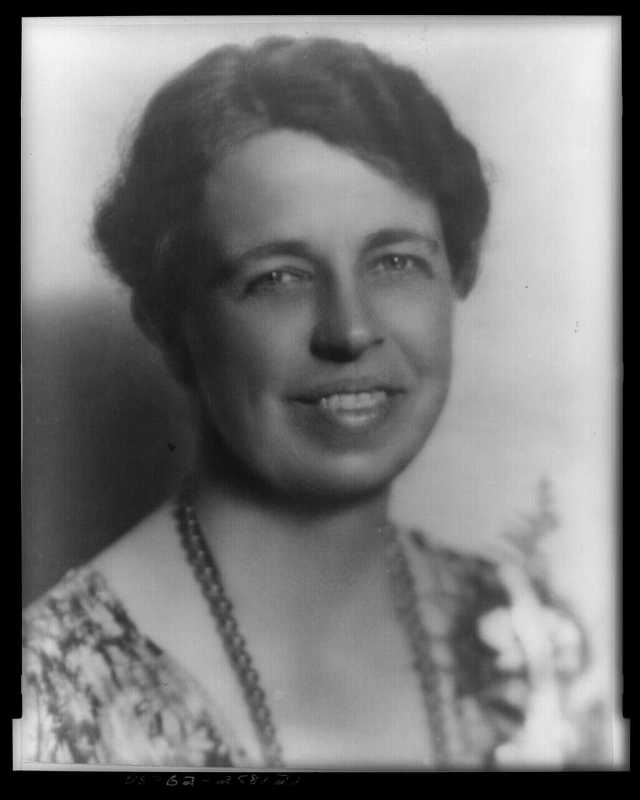
Eleanor’s same-sex relationships definitely weren’t part of the curriculum, but there’s a pretty good chance you’ve been made aware of her bisexuality since. Roosevelt, the niece of President Theodore Roosevelt, married her distant cousin, future president Franklin Delano Roosevelt, in 1905. She was always politically active, advocating for civil rights and having a huge behind-the-scenes influence as First Lady. Eventually her marriage became “an intellectual and political partnership” and that’s when she dove head-first into her lesbian social circle and developed a long-term relationship with Lorena Hickok. “Hick,” as she was known to friends, was the first woman to get a byline on the front page of The New York Times. Her relationship with Eleanor had a major impact on Hickok’s career, however, as her “objectivity” was questioned the closer she got to Eleanor.
10. Margaret Mead
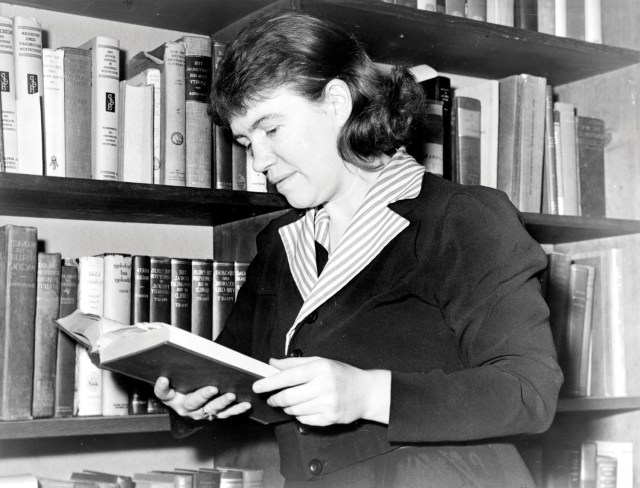
Is probably reading “Annie on my Mind”
Anthropologist and academic celebrity Margaret Mead had a relationship with Ruth Benedict, who’d been a professor of Mead’s at Barnard. The two worked together and apparently Benedict, the first American woman to gain status in a male-dominated academic field, was cured of her depression through her relationship with Mead. Mead believed that sexual orientation could be fluid and shift throughout one’s life. Mead married three times: Luther Creesman from 1923-28, Reo Fortune from 1928-35, and Gregory Bateson from 1936-1950. From 1955 until her death in 1978, Mead lived with and had a romantic and professional relationship with anthropologist Rhoda Metraux.
11. Billie Holiday
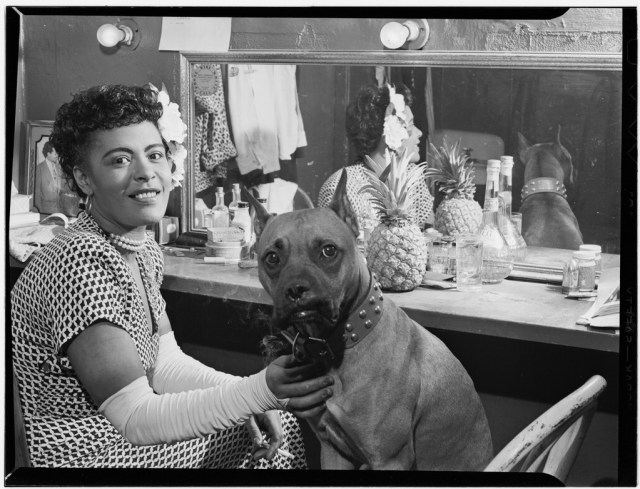
Not a cat person (photograph by William P. Gottlieb)
One of the world’s greatest jazz vocalists of all time, the bisexual blues singer had quite a few relationships with women. Holiday had a tragic and difficult childhood and struggled with drug abuse, drinking and abusive relationships with men, and her most storied same-sex relationship was that with actress Tallulah Bankhead. They were on and off for a while, and in 1948, Bankhead would come to Holiday’s shows at the Strand Theater after curtain at her play (Private Lives, on Broadway), and Bankhead would tag along on tour whenever she had the time. At one point, Bankhead bailed Holiday out of jail, after she’d been arrested for opium possession. They had a stormy breakup and later exchanged harsh letters regarding the representation of the other in their respective biographies.
12. A’Lelia Walker
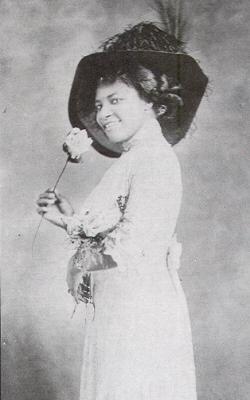
“A’Lelia Walker” by Source. Licensed under Fair use via Wikipedia
Walker’s mother, Madam C. J. Walker, was the first woman to become a self-made millionaire in America, developing a best-selling line of hair and beauty products for African-Americans. Her daughter, A’Lelia, was a vivid presence during The Harlem Renaissance, throwing lavish parties attended by princesses and dykes from Europe and Russia, New York socialites and the well-known intellectuals and writers of the Harm Renaissance. “A’Lelia Walker probably had much to do with the manifest acceptance of bisexuality among the upper class in Harlem,” wrote Lillian Faderman in Odd Girls and Twilight Lovers, “those who had moral reservations about bisexuality or considered it strange or decadent learned to pretend a sophistication and suppress their disapproval if they desired A’Lelia’s goodwill.” A’Lelia inhereted her mother’s fortune but also ran the business herself, opening training centers for Walker agents and the Walker Hair Parlor. She married three times and has been linked to the legendarily hilarious Mayme White (daughter of the 19th century’s last black Congress Member), stage actress Edna Thomas and Mae Fane, about whom little is known.



Susan B Anthony was also a world class white supremacist. Funny how white feminists always omit that from the worship of their hero.
she’s certainly not my hero, nor do i worship her, and honestly don’t know much about her besides what is in this post. so after your comment i went digging and found this article by ta-nehisi coates for anybody else interested in knowing more about this:
http://www.theatlantic.com/national/archive/2011/10/the-great-schism/246640/
i took her off the list.
Well she’s still worshipped in white feminist circles. Lesbian or no lesbian I’m not interested in white supremacist women.
I learned about her white supremacy from white feminists explaining why she’s not a great “feminist hero,” so.
Good for you. Do you want a cookie? I’ve seen endless white women feminists defending her racism as ‘part of the past’ as if that makes her racism ok. The only women I’ve seen call her and her fangirls out were non white women and last year Mallory Ortberg exposed her racism on The Toast. Now go and get a another white woman to pat you on the head for doing the bare minimum. I’m sure you can find someone on here to do it for you.
Thanks for posting. Definitely another thing not included in history class.
Its glossed over on most feminist sites. I’d only heard about it on sites orientated towards non white women. But Mallory Ortberg did talk about it on The Toast last year without offering any apologies for Anthonys racism.
How about acknowledging her racism and including her on the list? The title of this post is “12 women they didn’t tell you were queer in history class”, now if the title was “12 historical queer women you should admire” that would be a different story. History/people are complicated things and the fact that we have knowledge of her racism is just as important as knowing about the things she did to push for white women’s suffrage. Also, the fact that we have access (via Internet) to knowledge that used to only be known in academic circles is amazing and should be acknowledged. Susan B. Anthony’s racism wouldn’t have been taught to people who were becoming teachers in the past. You would have had to be able to access that from majoring in other areas.
Not much is surprising when you study history and understand how slowly the sharing of information used to take place.
P.S. I’m not interested in debating the importance of Susan B. Anthony’s place in feminist history. I see her as a figure in U.S. history.
This is supposed to be a welcoming space for non white women as well. Deifying racist white women contradicts that’s a little doesn’t it?
I think you could have left it up and simply revised it to include that information. Many people don’t know much about Susan B. Anthony besides the fact that she is on the dollar coin. If people already know about her racist ideology and well-documented association with white supremacist Belle Kearney, they don’t have to read it. They can skip over (maybe a TW for racism could be inserted postscript). But for non-history buffs I think it would have been a valuable opportunity to add a correction and recover from such a blunder, rather than just delete it as if it never happened. This is just my two cents; hope you find it constructive.
That Atlantic article wasn’t totally accurate, you could tell by the structure. I hope you used other sources before making your decision. I also don’t feel taking her off the list was the right choice, seems reactionary. Without her none of us might vote, those are facts. Culture progressed, so we get to judge in hindsight? Latina women weren’t even considered. We didn’t even get a deliberation, but I don’t hate. I have a grandma from Mexico, she was racist af against Mexicans! Still love her and would never erase her sacrifices for my benefit. IJS.
Yep, white women were (and are) just as complicit in racism as white men
That’s a tragically simplistic view of Anthony, that I guess is necessary to justify your utter wrath. I won’t defend the moves she made, but I can have some sympathy for the situation that drove her to them. Just as I can have sympathy for your anger. I think Riese’s article (also in response to this comment) is one of the better ones I’ve read at boiling down the “issue” of whether Anthony was actually a white supremecist (hint: she was not, or in better current parlance: it’s complicated).
Meanwhile, I’ve filed this under the confusing list I have of people throughout who have espoused views I don’t agree with, but create art or produce political and social results that I do agree with. It would be nice if life were only black and white, but 2016 has tragically shown us what that type of either/or thinking produces, in my opinion.
Sorry: supremacist
It makes sense that Trump will pardon her! She’s his kinda girl,white supremist!
Didn’t know that I think that puts a light on her too bad
Great article! Minor correction, though, re: my alma mater: There is no “Wellesley College School of Economics.” (Wellesley isn’t a university, so there are no schools within it.) It’s just the Department of Economics at Wellesley College.
fixed!!
Lovely article, enjoyed it. Thanks
Rachel Carson is another great lady who never married and had a long-time romantic friendship with a lady, Dorothy Freeman. Definitely qualifies as queer in my book!
http://www.rachelcarson.org/BooksAbout.aspx#.VfL6dtJViko
Patricia Laffan was a Dominatrix Fantasy.
Hope She was Bi-Sexual, and Not 100% Lesbian.
My first looked at Babe Didrickson…
https://www.youtube.com/watch?v=opR8uWD8bcc
This is one of my FAVORITE Drunk History segments! This one is my all-time favorite: https://www.youtube.com/watch?v=O4rnjV-GORg
OH WOW THIS IS SO GOOD
So, I think we can all agree: Drunk History + Riese + Carmen= Best History Lessons Ever!!!
Great! I *demand* a high-budget blockbuster movie be made about each of their lives. Enough shia labouff, give me Babe Didrickson.
*shakes fist at movie industry*
YES THIS!
God Emily Dickinson would have been the best The L Word character EVER.
I really wish someone would invent a new word for So that I would have a word to talk about the unique flavor of happy feels I get from reading articles like this one.
Ahem what I was attempting to say above was… I wish someone would invent a word for “that peculiar feeling of delight that stems from reclaiming historical figures as queer” so that I could have a word to talk about the unique flavor of happy feels I get from reading articles like this one.
How about “queering the confusion”!
It’s pretty weird that Florence Nightingale syndrome is “a thing” when Florence was probably queer as fuck. The patriarchy is dumb.
yeah that term is a very bizarre one, historically, because florence nightingale never fell in love with any of her patients! From The American Medical Resource Institute:
“The Florence Nightingale Effect (also referred to as Nightingale Syndrome) is a pop-culture reference to the real nurse, Florence Nightingale, who treated her patients with care and compassion. Some people mistakenly believe that the term refers to a nurse falling in love with her patient, or vice versa, but it is meant to connote a kindhearted and empathetic relationship, not a romantic one.”
It’s weird that it’s even referred to as a syndrome if that was the original intention of the term. Like, it’s a syndrome to actually give a fuck about your patients? I think the romantic aspect is the result of misogynistic condescension. I imagine dudes were like, “No dizzy dame could be so good at her job unless she was in love with a fella.” (Clearly my knowledge of douchey dude lingo only extends as far as the 1940s.)
You forgot fay blackett gill the first female solicitor one of her famous lovers was the actress Patricia Laffan who starred in the movie quo Vadis gill also dated madge garland
OH MY GOD! WHAT IS THIS?!
Amazing. Thank you, Riese.
you’re welcome!
I would just like to say that Eleanor Roosevelt is a babe!
I’m sad that I never even heard of five of these people. :(
Basically, half of the amazing ladies of history were queer, and they never told us that growing up, and the first thirty years of my life would have been a hell of a lot easier if all of history and life hadn’t been so gosh-darn straightwashed until very, very recently. Hopefully people my age are the Last Dinosaurs — hopefully queer kids coming of age today are having a way different experience. As Cameron Esposito says, “we should tell kids! Because there are little gay kids running around out there, and they don’t know what the fuck is going on!”
So bottom line: let’s get this shit into the history books.
as a teen lesbian who is obsessed with history, i’d like to confirm that while things aren’t perfect, our curriculum is much more inclusive than it used to be. in that once in a while it actually addresses the queerness of historical figures, rather than just brushing it under the carpet…
the political is climate is also much more accepting and in class, we’re free to share facts and tell our classmates things they might not know. i was gifted to honor of telling my classmates about emily dickinsons queerness, even though it wasn’t mentioned in the textbook haha
anyways, sorry if it seems weird that there’s a random girl replying to a comment you probably forgot you made from 6 years ago. i guess i just wanted to tell you that the queer kids are doing alright :)
Patricia Laffan was a Dominatrix Fantasy.
Hope She was Bi-Sexual, and Not 100% Lesbian.
Heads up, Margaret Mead is also a pretty shitty “anthropologist” who exotified and straight up lied about Pacific Island culture in some of her writings in order to support her theories of sexual fluidity.
She did lie, but also didn’t work to check the veracity of the handful of sources she interviewed.
She came to the islands with a particular mindset and beliefs and only took/accepted information that matched up with she already believed in accordance with the hypotheses of her mentor.
It was more insidious than just lies, it was dogmatic, stagnant, un-objective thinking in science.
My nerd rage is all mixed in with my social injustice rage, so messy and…ughhhh.
While her work in Samoa certain deserves scrutiny, I would suggest that it doesn’t make the rest of her work invalid. As arguably one of the most public anthropologists in American school anthropology, she’s had such significant impact on the developments of both feminist and queer anthropology–Esther Newton even gave her a shoutout in her edited volume: “Margaret Mead Made Me Gay”.
The ends don’t justify the means, but I do want to point out that there are a number of different takes about what happened in Samoa, and Derek Freeman’s is one of them. Anthropologist Louise Lamphere commented upon Freeman’s death that: “Dr. Freeman studied a different island 20 years after Mead’s research, and his notion that biology is more determinative than culture is oversimplified. Most serious scholarship casts grave doubt on his data and theory” (See NYTimes letter to the editor, 2001).
All this is to say that doing anthropology is fraught with complications and ethical issues, some of which Mead may have violated, and Freeman’s contributions will probably be debated until the end of time, but I’m uneasy with the idea that Samoa rules out Mead as an anthropologist entirely. Was her Samoa research shitty? Potentially. Was her entire career shitty? Not in my opinion.
I guess I might amend and say that the vast majority of pre-1960s (this is a loose date) anthropologists were pretty shitty….as were many other social scientists, but that doesn’t necessarily make them less anthropologists. Just ones that in contemporary anthropology we critique immensely.
Medical scientists, along with social scientists, can be included as having discriminatory and very cruel practices in their medical trials until the Belmont report and National Research Act of the mid-1970s.
I think if white people are going to contribute historical pieces to this website we could do a way better job of going further in-depth with our research and if people make mistakes on their reporting, add corrections and make sure there are TWs in place before it gets published. I probably know more about a lot of the people on this list because I was lucky enough to study history in university. It really isn’t stuff every single person knows unfortunately, but easily found with a quick google search. My #1 history rule is that primary sources from the person are a tell-all. If you are including someone in your piece, do a quick search of their letters and journals. What you will read is shocking. We are taught racist and exclusionary history in our public schools but the knowledge is readily available on the internet. Many, many respected figures, and many famous books have their ugliness glossed over in dominant textbook reading that high school students generally are prescribed. For example, Uncle Tom’s Cabin? Not really the groundbreaking read that caused the Civil War. It actually supported stereotypes and the dehumanization of black people, which is why it was so popular. That’s just one example of the way we rewrote history. Hopefully this comment was constructive to someone.
White women apologism is the best apologism. I love the way white lesbians contort on here to excuse their favourites. Hilarious.
But the guy who exposed her lies was a white dude, and it seems like he had something to prove.
The podcast Stuff You Mom Never Told You has a recent episode on Mead that gets into her biography and the controversy of her work. Worth checkin out for a broader opinion.
I really wish this post maintained a distinction between celebration and acknowledgment. Many (though not all) of these folks would be covered in public education (whether history or literature) and we can acknowledge that they had some lady-loving relationships and how messed up it is that those relationships are never mentioned/actively hidden without diving into hero-worship of them. Without being fully knowledgeable re: the life histories of all of the white women on this list, I’d be willing to bet money that most (if not all) of them did some incredibly shitty stuff.
Going into that: Margaret Mead’s particular work on Samoa is heavily contested (although primarily by white dude anthropologist who believes in biological determinism). I think it’s worth distinguishing between the reasons many people know that it’s contested (because of Derek Freeman) and the ways in which it’s NOT contested where it should be – anthropology as a discipline was born from colonialism and white people extracting culture/resources from people of color and using them for personal gain and Margaret Mead was a part of that (saying all of this as an anthropologist who sees how that shit is STILL HAPPENING on multiple levels).
Yes but you guys deify shitty racist white women on this site all the time who commit racism in the modern era. See Lena Dunham, Amy Schumer, Miley Cyrus et al. Basically you want to include every white women in history because it makes you feel good but fuck the non white women who would feel uncomfortable seeing racist white women being lauded/acknowledged on here. Also people of colour is a western term. It is the height of stupidity to term countries where non white people are the majority as ‘people of colour’ countries. People from India or Pakistan for example do not call themselves people of colour in their respective countries.ut you would only know that if you interacted with non white people beyond liking pics of Beyonce of instagram. Unsuprising you are an anthropologist.
I believe Jessica was on the same boat as you on this issue. She even said there should be a distinction between acknowledging and deifying white lgbtq history figures who were racist.
I know for one that Emily Dickinson was also pretty racist herself (see: the Malay took the Pearl, not I)
I agree and dislike it when the racism of white historical figures is ignored. But I am pretty bothered by your statement
“Unsurprising you’re an anthropologist”.
This last bit was really antagonizing. A lot of anthropologists are now fighting against the sins of previous anthropologist – particularly post colonial anthropologists. I’m Filipino and I shifted my major from anthropology to social science.
I’m tired of white women racist apolgism on this site. It’s near constant. Any time a white woman fucks up with regards to race its always ‘oh but being anti racist is so hard, we all fuck up’ Not to mention that racist comments have been made by an editor which she did apologise for, but not before her demented fans attacked me in the comments for calling out their hero. The same excuses are not made when someone is homophobic or sexist. I made that comment because a lot of white saviours become anthropologists in my experience. That’s all. It wasn’t a personal attack on you. And I’m tired of racist lgbtq figures everywhere. Racism is a huge issue still in lgbtq circles regardless of how much white lgbtq people try to sweep it under the rug.
I do want to see a distinction between acknowledgment and celebration in this particular post but I also hear what you are saying about how acknowledgment also still centers them in a way that is fucked up and alienating.
I apologize for not wording my post more carefully in order to address your last statements. I was thinking both of the ways that happens as anthropologists increasingly work with people within the US (who self-identify as people of color) as well as who work with people internationally but I didn’t express that at all clearly.
Actually, that premise has been challenged by scholars who can show that the research showing her work was flawed, was seriously flawed itself and quite misogynist.See: http://www.colorado.edu/today/2009/12/10/trashing-margaret-meads-reputation-based-deeply-flawed-evidence-cu-prof-finds
I also just learned that the amazing Pauli Murray was Interested in ladies. I thought North Carolina cultural moments had taught me all about her, and yet…!
Please open Autostraddle University and teach me about things like this.
life goals
Right? ?
Soooo happy about Lorraine Hansberry
I want to read all her lists.
She’s fantastic, and her lesbian identity was mostly hidden by her white ex-husband (a very close friend even after their divorce) who was her literary executor. Admittedly he probably was trying to “protect” her reputation and legacy in an overtly homophobic era, but we don’t know what choice she would have made if she’d lived longer.
I wish so much that she hadn’t died so young of cancer and could have been around for the civil rights and other liberation movements of the 60s and 70s! And written more!
Great article but it seems unnecessary to refer to gay/bi women living in a time where “queer” undoubtedly would have been used against them/not used by the women as queer
Gay/bi/lesbian/sexual invert would likely have been terms used against these women and many might not have identified with those words depending on their particular historical contexts. Queer makes more sense as an umbrella term to try and catch that there was something nonnormative about the way these women loved and that it’s related to what we now talk about as gay or bi or lesbian or queer
Yeah I agree with this but I understand that in this context the article is meant more for entertainment purposes and it isn’t in an academic journal somewhere. Nowadays since queer is becoming the “it” catch-all umbrella term, it made sense for the headline. I know it’s a disputed term though. And for educational purposes, it’s simply historically inaccurate to use the terms of today on someone from a different time period, as the word means something entirely different today. Hell, I have spoken to LGBTQ+ people who were young adults in the 60s and 70s and they are not fans of the term! That wasn’t that long ago! The part I have a problem with is this: “This is a list of acknowledgment, not celebration because history is messed up, man.” The original intention definitely seems to have been celebration…so I just don’t buy that. A lot of the women on this list deserve our praise and celebration. Lorraine Hansberry?? Yes! I know I know, I have commented enough on this article and the writers here have other jobs and are under pressure from deadlines. I just think that more research could have gone into this particular piece, maybe even with some citations to primary sources, on both the supposed sexual orientations of the historical figures and definitely the documented racism and white supremacist acts of many of the white historical figures listed.
I agree. These women would all have regarded the term “queer” as highly derogatory. Certainly they would not have been too thrilled about terms like lesbian, bisexual, homosexual. However, they would have recognised these terms as descriptive of their relationships, not as a slur or deliberate insult. You might follow Faderman, in describing their relationships or their lives as lesbian, rather than use the term as a noun or label for the woman herself. Or simply use “same- sex relationship “, or “women-loving-women”.
Language changes over time, and if you are speaking to a modern audience it makes sense to use modern terminology. Of course, it’s a best practice to use the language a living person prefers when speaking about them (when known), but I don’t think it makes sense to apply that standard to historical figures. Preferred terms for sexual orientations and gender identities varied greatly across different eras and different regions of the world, making finding one term that every person would have been comfortable with essentially impossible. Secondly, many historical figures never publically discussed their sexual orietation and/or gender identity, so it’s impossible to know how they thought of or refered to themselves.
I get that “women-loving-women” is a possible alternative to queer that doesn’t have the same baggage (and it’s a great term), but the issue is that it doesn’t have the same popularity. When writing for the internet you need to consider search engine optimization and the language used by the intended audiance of your writing – it’s going to be a lot easier for someone interested in LGBTQ historical figures to locate an article using the widely used term queer, rather than the less widely used WLW, particuarly given that the Autostraddle audience skews relatively young.
Thanks for sharing! They definitely should have included this in the curriculum growing up. Although I did learn about Margaret Mead and Ruth Benedict during my years in Anthro class. But then college is when you start getting more exposure to this kind of information.
I didn’t know about more of these than I knew about and that makes me so excited! Queer women hiding (and not hiding) all over history I LOVE IT
Ma Rainey, Bessie Smith, and Billie Holiday– the Jazz Age had it going on!
What about Amelia Earhart? She wrote a nadass prenuptial letter to her husband insisting on an open relationship, and she was once of Eleanor Roosevelt’s particular friends.
Googling pictures of her is definitely worthwhile. She is both gayer and more adorable than you think you know.
Badass. Badass is the word I was trying to type.
wait Amelia Earhart was confirmed gay are you serious because she was my hero and i would die
I don’t think there’s ever been any confirmation. She just looks like the type of woman who could destroy a thousand queer lady hearts with just a wink.
I had no idea that Willa Cather and Lorianne Hansberry were not straight, and I studied American Lit in college. Shouldn’t this have come up at some point?
I feel like what Willa Cather called her “inversion” usually does come up now, although I think straight people often describe her as a lesbian to simplify. She sometimes seemed to describe herself as being inwardly male (and was very tormented by self-hatred) and you could argue that today she would identify on the trans spectrum. (A lot like the writer Alice Sheldon, better known by her nom-de-plume James Tiptree, Jr., who pretty clearly identified as a transman named Alex in a time when trans identity wasn’t even conceived of but is treated as a lesbian today.)
There’s a famous story of Cather sticking her head and shoulders into a classroom in college to ask if it was the right room, and everyone assuming based on her hair, voice, and clothes from the waist up that she was a man. When she walked in, they saw she was wearing a skirt and the entire class laughed at her.
Lorraine Hansberry’s self-identity as a lesbian is much less well-known, mostly because her literary executor was her beloved very close friend and ex-husband, Robert Nemiroff, and he suppressed the information (probably to protect both her and himself).
But also because she died of cancer at age 34 in 1965, while she was very much out to herself but very deliberately closeted in the wider world. We don’t know whether she would have come out if she lived longer, but given her fierce work for civil rights, strong feminist views, and involvement in earlier lesbian activism, I like to imagine she would.
Another reason her sexuality is suppressed is that today we really only recognize her for A Raisin in the Sun and not for her other works. Very few people read or even produce The Sign in Sidney Brustein’s Window, which has a white male gay activist as a character, because the lead is a white Jewish man and it’s about the bohemians of Greenwich Village rather than the black community. It’s easier to ignore her interest in linking the fights against racism, anti-Semitism, misogyny and homophobia if you ignore the work where she makes that argument.
She’s really brilliant, though. If you want a treat, listen to one of the audio recordings of A Raisin in the Sun that includes excerpts from her political speeches. She’s so inspiring, and very smart about how to use her own privilege coming from a wealthy family in liberation struggles. We can still learn a lot from her!
I’m pretty sure a relationship with a woman that I feel an affinity with would cure my depression too.
Same.
As a middle school history teacher, I love this! Fully down to incorporate more queer history into my curriculum. Sadly, that curriculum is ancient history, not U.S. or modern world.
Anyone have reading suggestions for ancient (pre 500 AD) queer history?!
Sapho of course! (Although I think it’s not totally clear she was queer- there was a recent new yorker article about this.) Achilles. Also that ubiquitous quote from Plato about people being joined at the back in all sorts of gender pairings, although you probably want to check that out with a better source than Hedwig which is what I know it from.
Hi! Classics nerd chiming in here with some corrections.
1. Achilles isn’t a historical figure, he’s from mythology.
2. As much as I’d like to say otherwise, Achilles was not gay. He did have a very deep relationship with Patroclus, but I’d argue it wasn’t homosexual. In fact, I did argue it in a paper I wrote :)
3. The text you’re thinking of is Symposium, which is WAY GAYER than just that Aristophanes speech. Check it out, it’s an amazing read.
The Symposium is delightfully gay and I love that speech. And Aristophanes, in general, is the best introduction to “classics are not at all boring” for doubters.
(However, if I have to hear another person claim that Lysistrata is an example of early feminism, I’m going to go mad. We can direct/perform it with feminism now — or as a feminist production — but the text itself is not feminist, however hilarious it is.)
High five to you. Much respect for history teachers.
The Greeks were preettyyyy gay. Checkout Diotima from Ancient Greece. She was a philosopher and a priestess. She belonged to a ‘female love cult’ and Socrates, the dude himself, took some sort of ancient gender studies class under her where he learned of the ‘genderless nature of the Eros’. She was very much into ladies.
Ancient Mesopotamia was home to awesome lady-loving-ladies as well as gay men. The code of Hammurabi makes a reference to Salzilkrums – literally, they are ‘male daughters’. They enjoyed more rights then normal daughters and were given some rights only enjoyed by men – such as those relating to Succession. They were also allowed to marry women.
The Babylonian myth Alzahis says that one day, the gods were just so pissed off with the heterosexuals for having too many children. So he floods the world and as a blessing, he creates the Zalsikrums so that they wouldn’t need to flood the world again. So the Babylonian believe that BUTCHES are the God’s gift to the world. Note that some historians also believe that Zalsikrum is an umbrella term for ancient lgbtq people though.
And in the Philippines, there were the Asogs. They were Transwomen priestesses. Spanish conquistadors noted that some of them were married to women, and they were so confused about the sexuality of the Asogs. They were persecuted, but they kept leading major revolutions throughout the archipelago. One of them was Tamblot, another much hated Asog was Tapar.
Also, Confucius was preettyyyy gay
Correction: the Babylonian myth was called Atra-hasis. Sorry, my autocorrect was being mean
Hi Stephanie. Currently I’m teaching a course in Gay and Lesbian Literature. I use these textbooks: The Columbia Encyclopedia of Gay Literature and Chloe plus Olivia, an anthology of Lesbian Literature. Both books are out of print but available in second hand places and Amazon. Also check out the Penguin book of Homosexual Verse edited by Stephen Coote. All have samples of poetry of the ancient world as well as Plato’s theory of the soul mate. When the independent books stores closed, we all suffered.
bernadette brooten – love between women
I have to HEARTILY second the recommendation for Bernadette Brooten’s history Love Between Women: Early Christian Responses to Female Homoeroticism, which does a lot more than its subtitle suggests; she looks at how pagans and Jews thought about women-loving women in great detail to provide context. I especially love her material on love spells cast in public by women on other women, and on the evidence that the Jewish and Christians who criticized the Egyptians for allowing women to marry each other may have been right and not just making it up.
There is a very good argument that Origen (who lived c 185-265), one of so-called Christian Fathers, was a transwoman. Origen voluntarily elected to have genital surgery to become a eunuch, an understood third gender of the Roman era, and wrote a lot of interesting theology about the body that disagrees with mainstream Christian thought. (Some of Origen’s work was condemned by a Church council 300 later and publicly burned.)
There’s a lot of really terrible transphobic crap written about Origen, which claims he hacked off his genitals himself out of intense sexphobia instead of having a professional who specialized in the surgery surgically remove testicles (thereby changing the body’s hormonal balance). Those narratives want to critique Christianity for its very real sex negativity, but don’t understand or care about the complexities of gender identity in the Roman empire. An excellent source for Origen and other eunuchs that doesn’t make that mistake is Peter Brown’s The Body and Society: Men, Women, and Sexual Renunication in Early Christianity.
Obviously there are a lot of well-known male-male relationships before AD 500, like the one between the Emperor Hadrian and his lover Antinous, but material on women is harder to come by.
I would like to add the remarkable Juliette Gordon Low, founder of the Girl Scouts of America, to the list.
Wow, really? GSUSA is even more awesome than I realized, even after being in Girl Scouts for a dozen years!
Also – Jane Adams, Frances Willard and Virginia Woolf.
Virginia Woolf was the only queer woman whose queerness I remember learning about in school – in a college women’s lit class I learned that she was bi.
I actually did learn about a few of these in public high school. In 2002 I was in the pilot course for gay and lesbian literature, taught by a young queer English teacher who designed the course for her master’s program, and we started with a queer subtext reading of Willa Cather’s A Lost Lady. We also talked about Virginia. Woolf, and read rubyfruit jungle. Also James Baldwin and a few other gay guy things. She’s still teaching the course, and apparently it’s one of the most popular and hard-to-get-into English courses offered. Anyway, point is that some of us were lucky enough to learn these things in school! I shared this article with her and she said she learned some things from it btw :)
That sounds like such an amazing class!!
bernadette brooten – love between women
ack sorry meant to reply to a different comment gah
So much historygasms
Interesting. Correction: contrary to the sentiment expressed by “But during a time where it wasn’t okay for women in general to work outside the home, let alone African-American women,” actually, black women worked way more often than white women in the early 20th century. The majority of black women worked. They had to, because it was difficult for black men alone to provide for a family with their wages. White women were more likely to have professional, intellectual jobs, rather than service jobs, when they worked than black women. Source: Separate Roads to Feminism by Benita Roth.
Absolutely.
In high school our teacher said,’The Victorians all had servants.’ and one girl told her,’My family didn’t have servants, we were servants.’ Almost every kid in the class put up hands in agreement.
And working class women worked after marriage, again out of financial necessity. My mum was a seamstress as were her sister and SIL. Grandmother’s cohort were charladies, maids, more seamstresses and tailors, farmwives, factory workers and laundresses.
There is a default among the educated classes to think that middleclass is the norm. It isn’t and it never has been.
So Florence Nightingale had a close relationship with two cousins and an aunt and that makes her a lesbian? I’m calling bullshit on that one. That’s like proclaiming Benjamin Franklin had autism because he was more eccentric than his peers. Simply speculating on relationships and what they *might* have meant in order to support something we’d like historical figures to represent is lazy and annoying. Gimme the proof.
What I am taking from this is that you propose marriage to your close platonic friends and then never speak to them again if rejected.
Hmm on the other hand, people in that time period especially in Europe did MARRY their cousins. This was pretty acceptable until the 1860s. So having a close relationship with her cousins, and her not wanting to marry a man might have been percieved a certain way? I’m certaintly fishy about her aunt.
Try reading her letters to her cousins.
Black women were expected to work outside the home, just not in anything so cultured as the arts and humanities.
This is a microagression so I have to speak on it.
Other than that, this was a good article to start the day with. Thank you
Okay, I’ll remove that bit, thanks for pointing it out. It’s interesting, as these differences in expectations is something I am very familiar with and aware of, yet I didn’t question or think further on the Wikipedia sentence where I got that idea from (“During the late 19th century, it was still unusual for women to work outside of the home, let alone an African-American woman, and the journalism business was a hostile, male-dominated field.”) and obviously I should have.
Jane Addams! Probably the first lesbian to win the Nobel Peace Prize.
You say you haven’t heard the word lesbian once in your classes, and still you chose to omit it yourself from the article ‘s title. Why? Que*r is a slur. You could have used “lesbian and bisexual” and it would be just fine. Stop erasing the word lesbian, please. I’m not, and will beber be queer.
Since lesbian and bisexual would have also been perceived as slurs at the time, women loving women or similar terms would be more accurate and appropriate than any terms referencing contemporary identity politics.
Don’t forget about the first American woman in space, Sally Ride!
The fact that I’d only heard of 6 of these women and had no idea that any of them were queer is the reason I want to study history. I’d love to specialize in historical gender and sexuality matters.
Please don’t call women ‘queer’ if they have not told you (or had it documented) that they identify as queer. Queer is still a a slur that not every person lumped under the ‘queer’ umbrella has reclaimed/is comfortable being called, (and it was a slur when some of these women were alive.
As Giulia said, ‘lesbian and bisexual’ works.
So was lesbian, though. So was gay, and it’s still one of the most generally used slurs. And reducing the available descriptors to what we guess they might have used for themselves is impossible at best, and incomprehensible at worst – do you really want a list in which one person’s an invert, the next a homophile, then a Uranian, then a Sapphist, then unnameable because they probably never had a language for what they were, then a bulldyke, then a pervert? This is the kind of language people used for themselves, if you take even a cursory stroll through old books and letters.
This! Language is important, and I love parsing it, but for fun, not when it’s really beside the point of a larger discussion (in this case how the histories of women-loving-women are altered and/or erased).
Since “The Election” I’m trying to push back against it as a criticism, when the critique could derail the conversation in the opening post or article. I love it as a companion conversation. I’m frustrated with it as a constant tool to stifle conversation (i.e. “you said it wrong and you should be embarrassed”). As a political example, too often opponents of a measure are able to derail it by getting us all twisted up in talking about and defending *process*, that we never talk about the actual measure and its merits (which may be unassailable).
However, lesbian and other WLW erasure is an important topic. Which is the topic of this article. So what are we fighting about, again?
Finally: to expand a bit, I realize it may seem somewhat ironic that I’m arguing for more open discourse by trying to shut down certain types of discourse. I wish things were simple! Maybe we could brainstorm better ways to address the looming peripheries? Here are some I came up with off the cuff:
1. requesting an article through A+ discussing the peripheral issue
2. requesting an article through the comments discussion the peripheral issue
3. asking questions about our assumptions, instead of making statements
4. making “I” statements in the comments (e.g. “when I read this word I feel…which is interesting because it seems counter to current modes of thought”), versus assuming ill-intent
4B. calling out inadvertent hurt or pain using “I” statements, versus assuming ill-intent
Grand ideas. I wish I were evolved enough to consider them first, instead of second, third, etc…
I’m a little late to the comment party, but fun fact: Lizzie Borden (of “took an axe” fame) was also gay.
Also: Lorraine Hansberry!!!
If you’re into Lorraine Hansberry, check out my response to Colleen above!
There are screenplays and stageplays [“Hick” by Terry Baum] circulating about Lorena Hickok and Eleanor Roosevelt.
The Bechdel Group is holding a stage reading and q&a for “Hick – More than Eleanor’s Best Friend” at Jimmy’s No. 43 (43 E 7th Street in the East Village) from 6:00 – 9:00pm in New York City.
The screenplay is about Lorena Hickok at the height of her career as a journalist and how her work gets influenced by her relationship with Eleanor Roosevelt.
Love the piece! One small addendum: Katharine Lee Bates was herself a full professor of English at Wellesley College, not just Boston-married to a professor there.
I applaud any article that explores true relationships. I do question those that always say “Show me the evidence”. We never apply that to those we assume are heterosexual.
Great article about some very powerful women. I wish we could serve them some of the Best BBQ in Nashville and her them sing, act or read a one their books to us again. Thank you for sharing the great information.
No mention of Michelle Obama?
I bet she has sunk a root in more men than Freddie Mercury.
munchkin kittens for sale
What an amazing write-up. After searching on the internet, I finally got what I’m looking for.
Thank you very much. Keep up the good work you are doing here.
Therefore we also offer a 100% legal driving license.
https://kopenrijbewijs-origineel.com/
sugar gliders for sale in Ohio